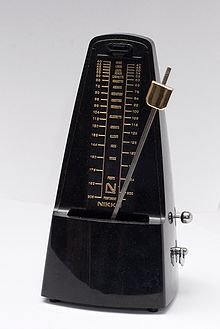Mandolu’s Music Practice Tips #2 Fun With Scales
Learning is an important part of life and for musicians learning is an ongoing process whatever level you are at.This series of blog posts is intended to help all the musicians out there to do focused musical practice.These tips are all taken from my own practice habits. I hope they will be useful to you too.
Fun with Scales
The idea of playing scales is very boring to many musicians, while others love playing scales. I have a cousin who is a classical musician, her husband is a classical guitarist. A few years ago they came to the UK for a family reunion. i asked if I could listen to him play guitar. He answered, "well I'm only playing scales. I have to play scales every day or I will loose the fluidity of my playing."In other words:
Use it or loose it
Why Play Scales?
- Playing scales helps you to master your instrument. They teach you where each note is and the relationships between the notes..
- Playing scales helps to teach you how to improvise. Most riffs and solos are derived from a particular scale.
- Playing scales regularly makes it faster to learn new tunes as you recognise the notes and the scale they fit into.
- You will understand how chords are formed from playing arpeggios and find new ways of playing each chord more easily.
- For those people who want to learn to read music fluently, following written scales and arpeggios as you play them will vastly improve your music reading skills
There are many ways to make playing scales fun and challenging. Here are a few that I implement into my practice regime.
Rhythmic Triplets
I like to vary the rhythm of my scales playing them as triplets, ( groups of three notes, often played with the same timing value as one whole note) which also gives me practice at playing triplets for lead in notes and ornamentation.
Ascending and Descending Patterns
I also play the first three or four notes and then go back to the second note of the scale and repeat the same pattern, then starting on the third note etc... Played up and down through two octaves in this this pattern is a great way to practice fluidity and it can be done on any instrument. Remember to include the use of your 4th finger to build up its strength and dexterity.
Incorporate Arpeggios
Another fun thing is to incorporate scales and arpeggios together in one exercise. (An arpeggio is made up of the individual notes of a chord usually played up and down) Start on the first note, in a particular key and play a three or four note arpeggio. Then do the same starting on the second note of the previous arpeggio, giving you a different inversion of the same chord.Play the arpeggio both up and down, several times until you can play it smoothly.
Use a Metronome

A metranome is a device or app that keeps time at a set rate. Using a metronome can also make playing scales and arpeggios fun and challenging. Start with the speed at about 50 bpm (beats per minute ) and increase it little by little, until you reach the desired speed. Over time you will find that it gets easier and easier to play faster.

Image source Upsplash
When I practice scales on my violin, I like to use the slow speed to practice my long bow technique and the faster speed to practice my faster bow strokes and shuffle patterns.When I am learning a nnew tune I start with metronome slow and gradually increase the rate until I can play it fast (90-120 bpm)
Play Scales in all the Different Keys
Play your scales in all the different keys, especially focus on the keys that you find the most difficult. After some time of scale practice, you will find that you become more and more comfortable playing in many different keys.
The Pentatonic Scale
Once you have learned your major and minor scales in every key, you can then move on to the pentatonic scale.
The pentatonic scale is a 5 note scale that is found in almost every type of music in the world and is therefore very useful to learn for improvisation practice. If you stick to the notes of this scale when improvising, you can't play a wrong sounding note, so it is a great foundation for learning to play along with others. Although there are a few different kinds of pentatonic scale, the most common major and minor pentatonic scale, consists of the the 1st, 2nd, 3rd, 5th & 6th notes of the major scale. In C major this would be C D E G & A. Below is the notation of the use of the pentatonic scale in the song Oh Susanna a traditional tune.

Image Source Wikipedia
I hope you have enjoyed reading my practice tips post no.2. If you missed the first post in this series, you can find it here
Follow me to make sure you don't miss the next installment


Congratulations! Your post has been selected as a daily Steemit truffle! It is listed on rank 25 of all contributions awarded today. You can find the TOP DAILY TRUFFLE PICKS HERE.
I upvoted your contribution because to my mind your post is at least 3 SBD worth and should receive 94 votes. It's now up to the lovely Steemit community to make this come true.
I am
TrufflePig, an Artificial Intelligence Bot that helps minnows and content curators using Machine Learning. If you are curious how I select content, you can find an explanation here!Have a nice day and sincerely yours,

TrufflePigCongratulations! This post has been upvoted from the communal account, @minnowsupport, by enjoycompany-mandolu from the Minnow Support Project. It's a witness project run by aggroed, ausbitbank, teamsteem, someguy123, neoxian, followbtcnews, and netuoso. The goal is to help Steemit grow by supporting Minnows. Please find us at the Peace, Abundance, and Liberty Network (PALnet) Discord Channel. It's a completely public and open space to all members of the Steemit community who voluntarily choose to be there.
If you would like to delegate to the Minnow Support Project you can do so by clicking on the following links: 50SP, 100SP, 250SP, 500SP, 1000SP, 5000SP.
Be sure to leave at least 50SP undelegated on your account.
Very useful
Posted using Partiko iOS
I’m so glad you think so, please let me know how you go with it, I would love some feedback anytime🙏🎼
Posted using Partiko iOS
Congratulations @enjoycompany! You have completed the following achievement on the Steem blockchain and have been rewarded with new badge(s) :
You can view your badges on your Steem Board and compare to others on the Steem Ranking
If you no longer want to receive notifications, reply to this comment with the word
STOPDo not miss the last post from @steemitboard:
greetings of our peace and friendship ..
Posted using Partiko Android
Greeting to you too, thanks for the comment I hope you find the post useful too.🙏
Posted using Partiko iOS